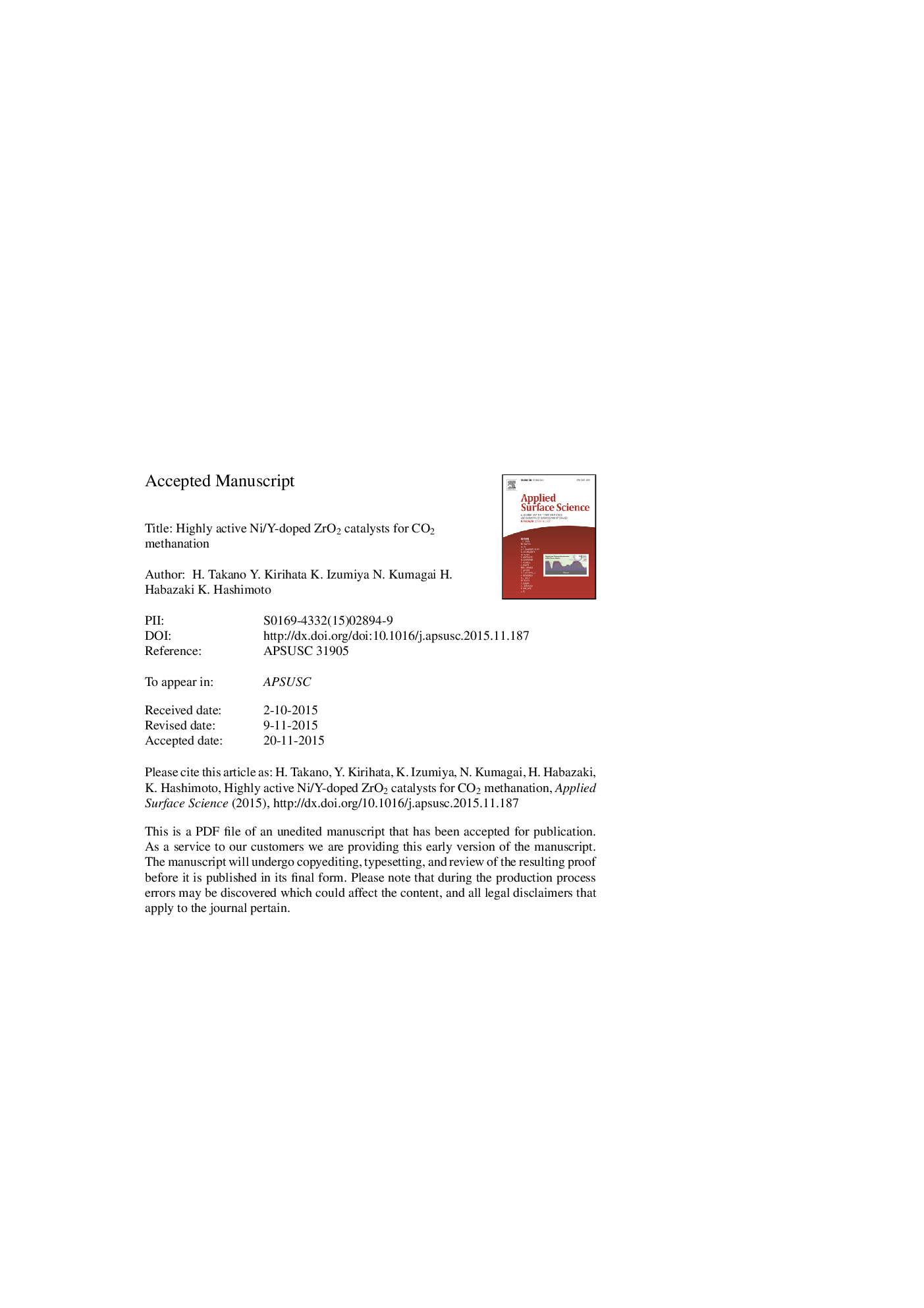| Article ID | Journal | Published Year | Pages | File Type |
|---|---|---|---|---|
| 5353422 | Applied Surface Science | 2016 | 42 Pages |
Abstract
The catalytic methanation of CO2 was carried out on Ni catalysts supported on Y-doped ZrO2 with various Y3+ concentrations and Ni/(Zr + Y) molar ratio = 1. The catalysts were characterized by X-ray diffraction, scanning transmission electron microscopy, specific surface area, temperature-programmed desorption of CO2, and temperature-programmed reaction. In addition, operando diffuse-reflectance infrared Fourier-transform spectroscopy (DRIFT) was used to identify the adsorbed reaction intermediate. Catalysts supported on Y-doped ZrO2 show higher catalytic activity than the catalyst on Y-free ZrO2 with a monoclinic ZrO2 phase. The catalytic activity is also dependent upon the Y3+ concentration, and the highest activity was obtained for the catalyst with a Y/(Zr + Y) molar ratio of 0.333, which consists mainly of fcc Ni and cubic ZrO2 phase. Y3+ doping into ZrO2 introduces oxygen vacancies, which play an important role in enhancing the catalytic activity. The operando DRIFT study reveals that a CO adsorption intermediate is absent, and bidentate carbonate is an important intermediate for CH4 formation.
Related Topics
Physical Sciences and Engineering
Chemistry
Physical and Theoretical Chemistry
Authors
H. Takano, Y. Kirihata, K. Izumiya, N. Kumagai, H. Habazaki, K. Hashimoto,
